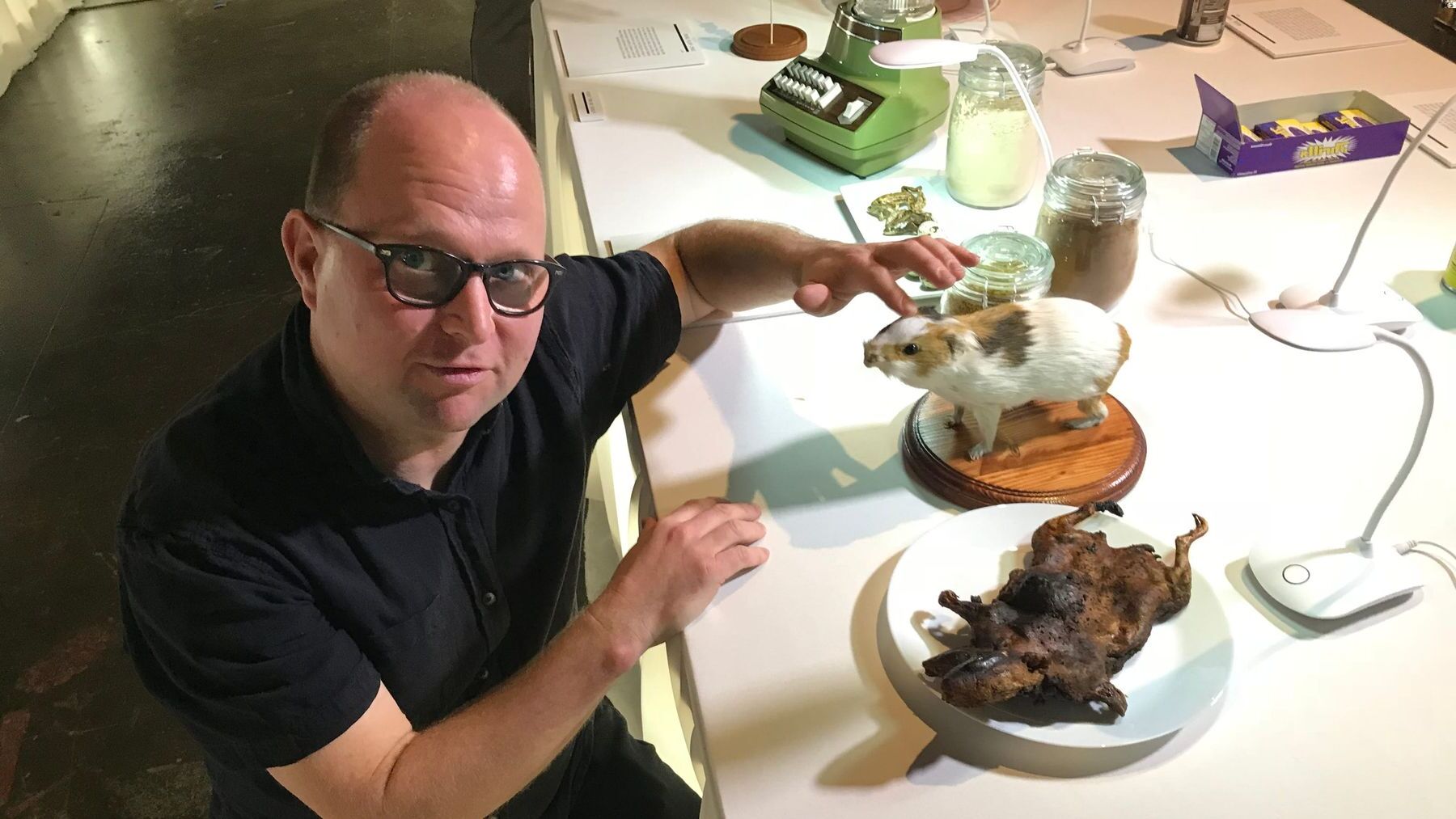
Ever wondered what the world's most disgusting foods are? The Disgusting Food Museum in Malmö, Sweden, showcases some of the most bizarre and stomach-churning dishes from around the globe. From fermented shark in Iceland to maggot-infested cheese in Italy, this museum isn't for the faint-hearted. Why do people eat these foods? Often, it's about tradition, culture, or survival. Some dishes might even surprise you with their nutritional benefits. Ready to challenge your taste buds? Let's dive into 35 facts that will make you question everything you thought you knew about food. Buckle up; it's going to be a wild ride!
Key Takeaways:
- The Disgusting Food Museum in Sweden showcases 80 stomach-churning foods from around the world, challenging perceptions of what is considered edible and delicious. Visitors even receive a vomit bag upon entry!
- From fertilized duck eggs to fermented shark, the museum features bizarre delicacies like balut, hákarl, and even drinks like snake wine. It's a wild culinary adventure that will definitely test your taste buds!
What is the Disgusting Food Museum?
The Disgusting Food Museum in Malmö, Sweden, showcases some of the world's most unusual and stomach-churning foods. It aims to challenge perceptions of what is considered edible and delicious.
- The museum opened its doors in 2018.
- It was founded by Dr. Samuel West, a psychologist known for creating the Museum of Failure.
- The museum features 80 different food items from around the globe.
- Each exhibit includes detailed descriptions and historical context.
- Visitors receive a vomit bag upon entry, just in case.
Foods from Asia
Asia is home to some of the most unique and challenging foods featured in the museum.
- Balut is a fertilized duck egg with a partially developed embryo, popular in the Philippines.
- Durian is a fruit known for its strong odor, often described as a mix of rotten onions and turpentine.
- Century eggs are preserved duck, chicken, or quail eggs that have been fermented for several months.
- Hákarl is fermented shark from Iceland, known for its ammonia-rich smell.
- Casu Marzu is a Sardinian cheese infested with live maggots.
European Delicacies
Europe offers its own array of peculiar foods that might turn some stomachs.
- Surströmming is a Swedish fermented herring that has a pungent smell.
- Smalahove is a Norwegian dish made from a sheep's head.
- Jellied moose nose is a Canadian delicacy, though it has European roots.
- Blood pudding is a type of sausage made from animal blood, common in the UK and Ireland.
- Lutefisk is dried fish treated with lye, popular in Norway.
African and Middle Eastern Oddities
These regions contribute their own unique flavors to the museum's collection.
- Haggis is a Scottish dish made from sheep's heart, liver, and lungs, though it has roots in Middle Eastern cuisine.
- Fried tarantulas are a delicacy in Cambodia.
- Bushmeat includes various wild animals like bats and monkeys, consumed in parts of Africa.
- Kiviak is a Greenlandic dish made by fermenting seabirds inside a seal carcass.
- Locusts are eaten in many Middle Eastern countries as a crunchy snack.
American Oddities
Even the Americas have their share of bizarre foods.
- Rocky Mountain oysters are deep-fried bull testicles, popular in the United States.
- Escamoles are ant larvae considered a delicacy in Mexico.
- Cuy is roasted guinea pig, commonly eaten in Peru.
- Prairie oysters are a cocktail made from raw egg yolk, Worcestershire sauce, and hot sauce.
- Chitlins are pig intestines, often fried or boiled, popular in the Southern United States.
Drinks That Challenge the Palate
The museum also features some of the world's most unusual beverages.
- Kumis is a fermented dairy product made from mare's milk, popular in Central Asia.
- Pacharán is a Spanish liqueur made from sloe berries.
- Snake wine is a Vietnamese drink made by infusing whole snakes in rice wine.
- Chicha is a traditional South American drink made from fermented maize.
- Seagull wine is made by fermenting a dead seagull in water, a traditional Inuit beverage.
Insects and Bugs
Insects are a common source of protein in many cultures and feature prominently in the museum.
- Chapulines are grasshoppers eaten in Mexico, often seasoned with chili and lime.
- Witchetty grubs are large, white larvae eaten by Indigenous Australians.
- Sago worms are larvae of the red palm weevil, consumed in Southeast Asia.
- Mopane worms are caterpillars eaten in Southern Africa, often dried or smoked.
- Silkworm pupae are a popular snack in Korea, usually boiled or steamed.
Final Bite of Knowledge
The Disgusting Food Museum offers a unique glimpse into the diverse culinary practices around the world. From fermented shark in Iceland to fried tarantulas in Cambodia, the museum challenges our perceptions of what’s considered edible. It’s not just about grossing people out; it’s about understanding cultural differences and expanding our horizons. Visitors leave with a newfound appreciation for the vast array of foods humans consume. If you’re ever in Sweden, this museum is a must-visit for anyone curious about global cuisine. Remember, what’s disgusting to one person might be a delicacy to another. So, next time you encounter an unusual dish, think twice before turning up your nose. You might just discover a new favorite.
Frequently Asked Questions
Was this page helpful?
Our commitment to delivering trustworthy and engaging content is at the heart of what we do. Each fact on our site is contributed by real users like you, bringing a wealth of diverse insights and information. To ensure the highest standards of accuracy and reliability, our dedicated editors meticulously review each submission. This process guarantees that the facts we share are not only fascinating but also credible. Trust in our commitment to quality and authenticity as you explore and learn with us.


